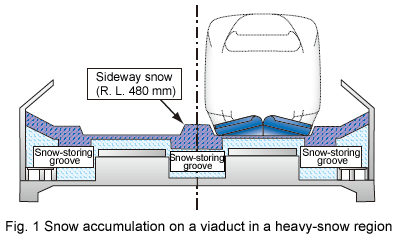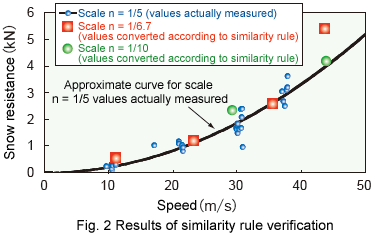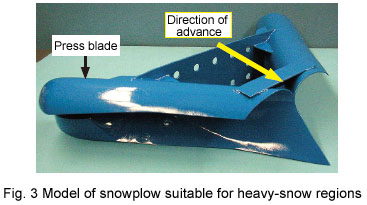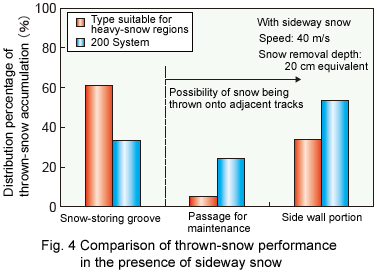On Shinkansen lines in snowy regions, snow that accumulates as a result of being thrown up and removed by snowplows (referred to below simply as plows) during train running is stored in snow-storing grooves provided at the side of the tracks (Fig. 1). However, in regions where excessive snowfall accumulation and snow packing are seen, these grooves are buried by snow removal activities, and it is assumed that snow walls (wayside snow) are formed. It can be considered that the formation of this wayside snow may have an effect on the direction of thrown snow and train running resistance during train operation involving snow removal. For this reason, the RTRI investigated the performance of thrown snow performance and snow resistance using scale models of 200-System Shinkansen plows, and further developed a plow shape that minimizes the effect of snow thrown onto adjacent tracks as well as minimizing snow-resistance of the plow.
In advance of testing, the RTRI devised a similarity rule relating to the snow-resistance of the plow, and confirmed that the rule was reasonable using three scale-model types (1/10, 1/6.7, 1/5) (Fig. 2). With this rule, snow resistance working against a full-scale plow can be estimated from tests with the scale models. Next, from the results of snow removal testing and numerical calculations using models with seven shapes, the RTRI developed a plow shape that is suitable even for snow-heavy regions (Fig. 3). The snow-resistance of the plows of this shape is in the same order as that of 200-System plows, and the accumulation of snow thrown onto adjacent tracks in a situation where sideway snow has formed was found to be about 40% less than that of 200-System plows (Fig. 4).
|







